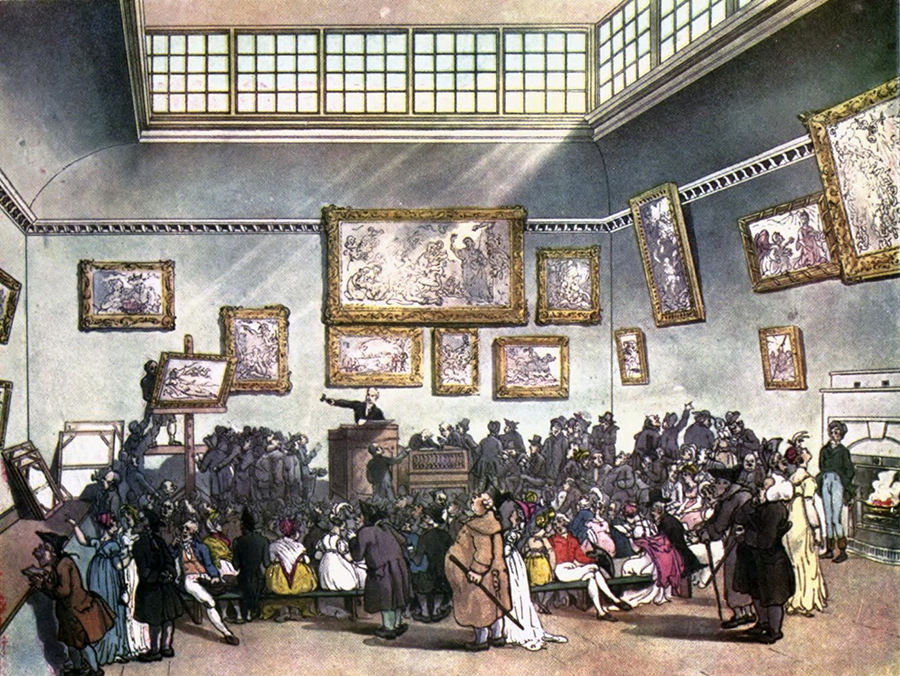Fulvia Zaninelli
Networks and Transnational Exchanges: The Art Market and the Circulation of Cultural Capital, 1921–1937

Thomas Rowlandson and Augustus Charles Pugin, An Auction, 1804, aquatint, from Rudolph Ackerman, The Microcosm of London; or, London in Miniature, vol. 2 (London, 1904), 32, pl. 6
This year, I have continued my archival research in the field of the art market and the transnational movement of cultural capital during the interwar years. With a preliminary focus on the investigation of old master paintings associated with Kunsthandlung Böhler, works currently or previously part of the collection of the National Gallery of Art in Washington, my research focuses on selected case studies that investigate the transnational network that unites these artworks. Facilitated by the digitization of the Kunsthandlung Böhler Archive by the Zentralinstitut für Kunstgeschichte in Munich, my research has allowed me to address lacunae and resolve questions within these artworks’ provenance records. The results shed light on previously obscured networks between dealers, be they channels of trade or information dissemination.
This research endeavor is part of a more expansive project that proposes an analysis of the transnational relationship between the art markets of Europe and the United States during the interwar years. The investigation is conducted through the prism of art dealing, considered at this time as a channel for cultural transfer and exchange. The overarching objective is to demonstrate how the ownership history of these works, explored through a network analysis focused on transnational exchanges in the secondary market, can contribute to a deeper understanding of the historical significance of the resale art trade in shaping American public art collections—such as the National Gallery of Art in Washington, Detroit Institute of Arts, and Museum of Fine Arts, Boston—that boomed in the first half of the 20th century.
Fulvia Zaninelli started a new position at the National Gallery of Art as museum specialist in the department of curatorial records and files.
